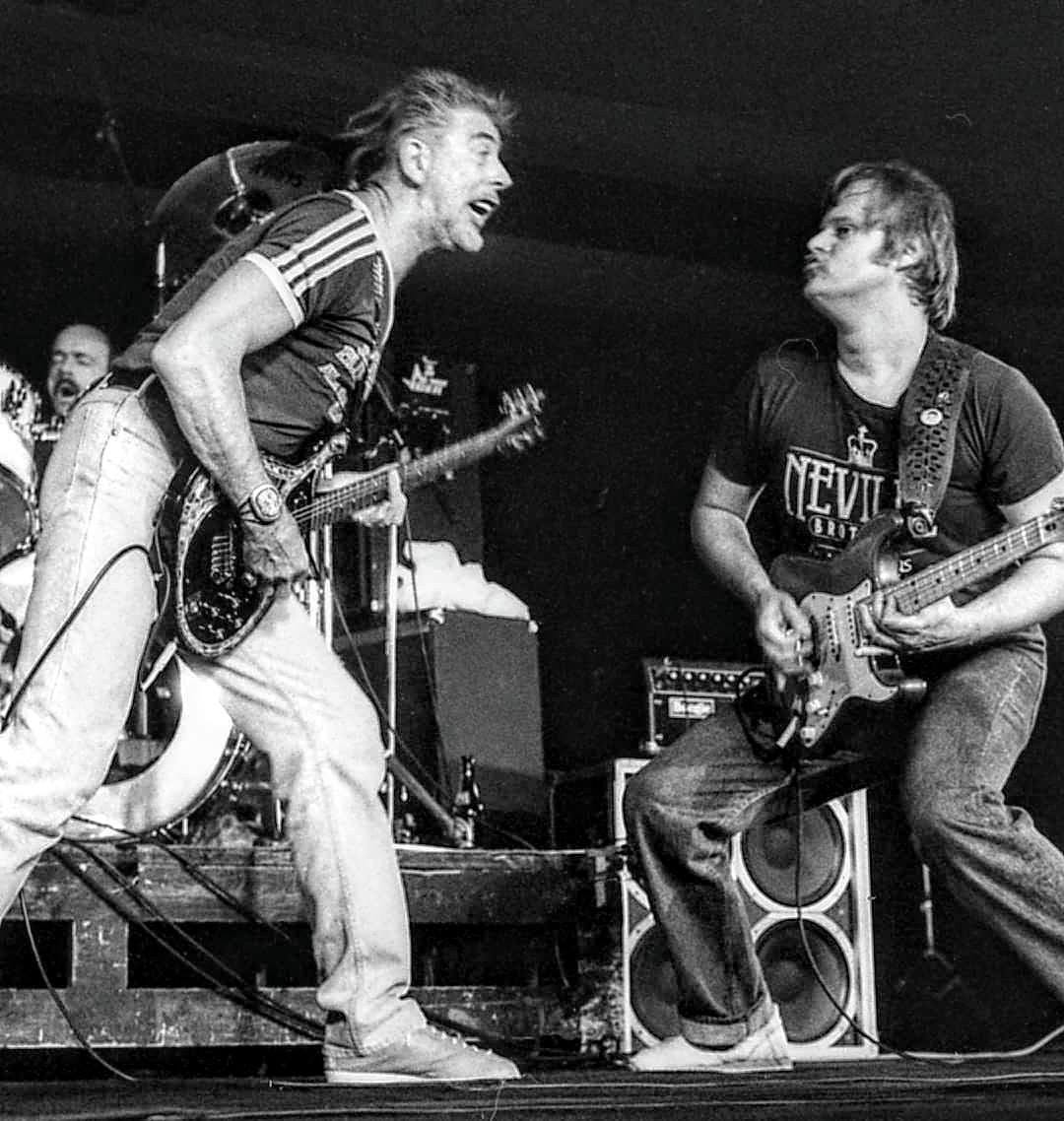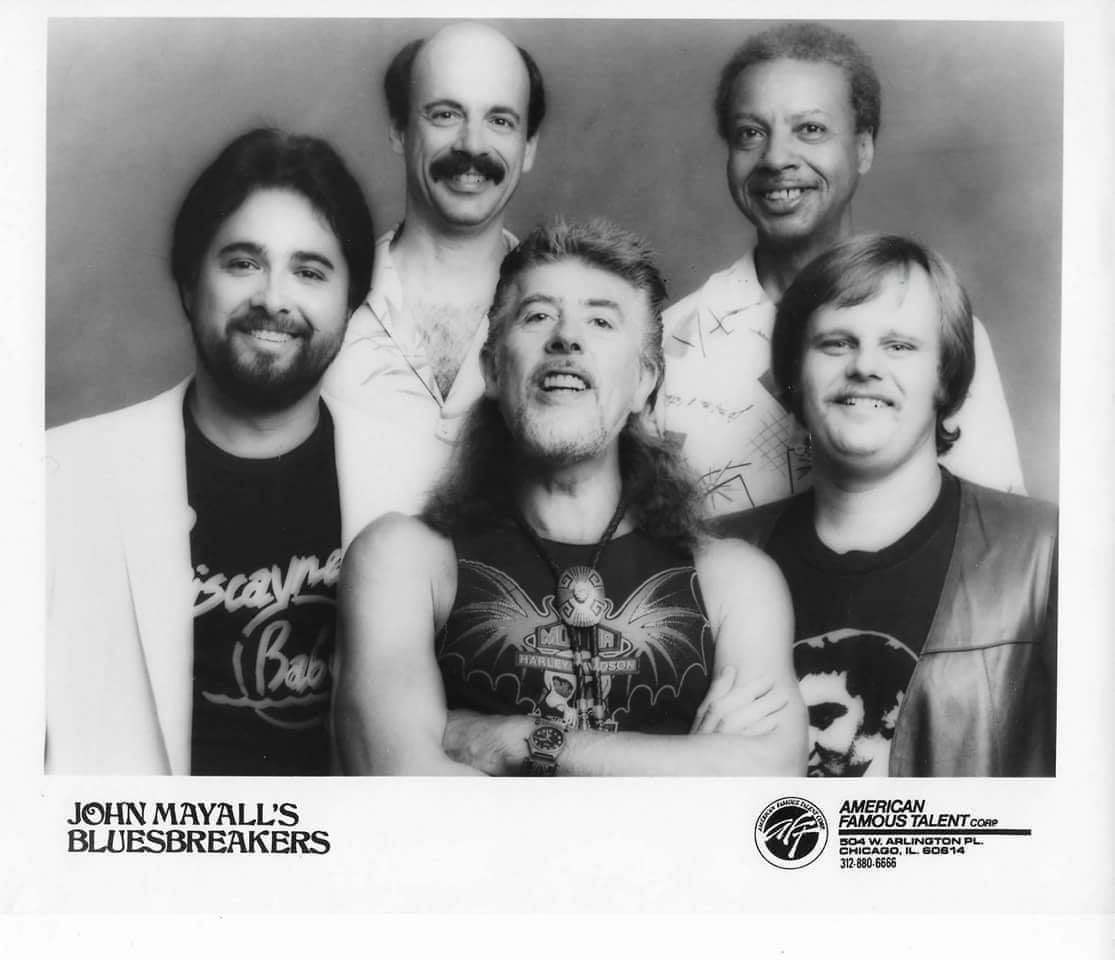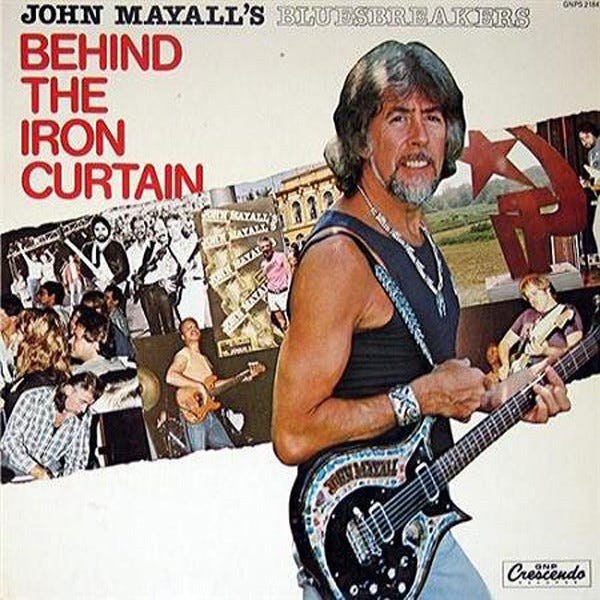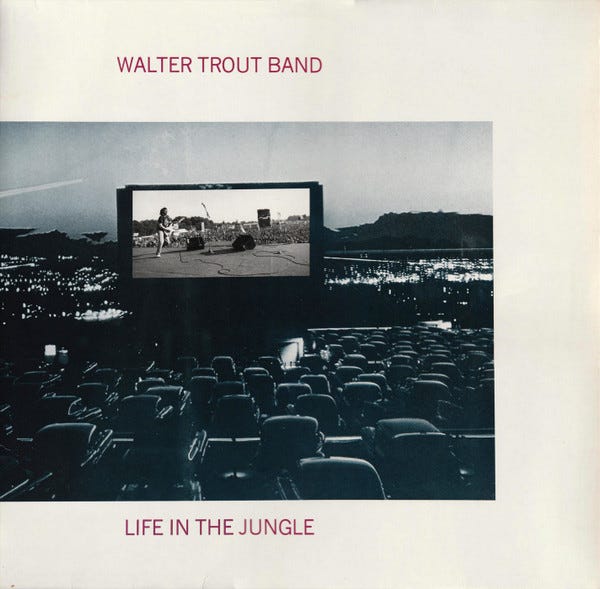And I wanna rock your gypsy soul
Just like way back in the days of old
Then magnificently we will float
Into the mystic
And when that fog horn blows
You know I will be coming home
-Van Morrison
Last week was the 200th leg of my journey, which started on October 18, 2020, when I put my canoe in that Big River called Jazz for the first time. It’s been a long journey in waters deep and wide; however, none as deep as last week’s leg. While the wound is still fresh, I’ve struggled to put my canoe back in the water. What could I possibly write about next?
I’ve decided to share a story about a friend I made a long time ago.
Our paths crossed for a few months back in 1989 and as quickly as our paths crossed they moved away, as these things often do. But I had the chance to see him again a few weeks ago at the Dakota Jazz Club in Minneapolis. That was the first time I’d seen him in 35 years since the night he played with John Mayall and the Bluesbreakers at the Forum in LA in 1989. His name is Walter Trout, and it was his music that comforted me as my son lay dying in a hospital bed in Robbinsdale, Minnesota.
At Walter’s show at the Dakota, I shared a table with Dave, whom I had never met before. He was about the same age as my oldest brother. He shared with me a lot about the Minneapolis blues scene in the late 1970s and early 1980s, most I missed because I was either too young or it happened after I’d already left home for New York when I was 17 in the summer of 1980.
When Doug Maynard’s name came up, I told Dave he was from White Bear Lake and buried in Lakeview Cemetery. Dave knew all this. They had been friends and was with him the week before Maynard died in 1991. He told me he’d even recently been to his gravesite to pay his respects. Then I told him a couple of gravesites to the left of Maynard’s are my Mom and Dad’s, which I just happened upon one day while visiting them:
Although Maynard and I are both from White Bear Lake, I’d never heard of him. I went online and found this fantastic video from 1981 singing To The Left:
It’s from KTCA TV’s Nighttimes Variety, a weekly program focused on the early 1980s Minnesota music scene. I just love this song. As Dave and I talked a little about Maynard’s band, he mentioned that they did a great cover of Van Morrison’s Into The Mystic and at that moment Walter Trout hit the strings of his first blues tune. I was instantly taken way back to the days of old, magnificently floating into the mystic…
This week on that Big River called Jazz we will explore the world and the incredible journey of the great blues guitarist Walter Trout.
After a traumatic childhood in Ocean City, New Jersey, Walter Trout got in his VW Bug and drove west. He camped in a pup tent along the way and lived on peanut butter and jelly sandwiches. On October 31, 1974, he arrived in Costa Mesa, California. It was Halloween and he went to a party in a Gorilla suit. It was pretty much a party that lasted for the next ten years…
Before long, he became a sideman and landed with John Lee Hooker and Big Mama Thornton.
In an interview, Trout recalls his time with Hooker:
Well, I got in John Lee Hooker’s band and the guys in the band said, “We’re going to play E, all night. You just play E. You don’t change. When he points at you, you play solo till you’re done and the rest of the night, play E.” For instance 'Stormy Monday' E, 'They call it Stormy Monday' E, 'Tuesday's just as bad' E, 'Wednesday's worse' E, right. I said “I’ve got it” and I had the E chord down. After 4 or 5 gigs I was trying to communicate with Mr. Hooker and I said, “How come we’re not doing One Bourbon, One Scotch and One Beer, it’s your most famous song?” And he said to me, “I don’t think you can follow the changes!”
At the Dakota show, Trout talked about his audition with Big Mama Thornton, who along with Trout’s old bandleader John Mayall just earned the Musical Influence Award at the Rock and Roll Hall of Fame. He said at the audition he was the only one there under 85 and white. The story goes that she told him, “No rock. No psych. Just play like B. B. King.” Which he did and after the first song she smiled at him and said, “You’re hired.”
In another interview, Walter shared this story about Thornton:
Big Mama Thornton, she was near the end of her life and she was really small, emaciated at that point. She dressed up like a man, wore a cowboy hat and was very cantankerous. She sat on a piano stool and she’d take her teeth out before we went on stage because it’d get in the way of her playing harmonica. We walked out one night and she started playing and realized she had her teeth in. She pulled her teeth out and said “Hey Walter, do something with these teeth”. At that point, I had to think, how badly do I want this gig? Am I actually going to take those teeth and put them somewhere? And I did.
Between 1981 and 1984, Walter was the lead guitarist in Canned Heat. It was during this time that he crossed paths with John Mayall. Here’s a photo of Walter when he met Mayall for the first time in 1981:
Three years later Mayall called him up and asked him to join the Bluesbreakers. He accepted, following in the footsteps of other great Mayall guitarists Eric Clapton, Peter Green, and Mick Taylor.
In 1985, I was stationed at Fort Sill, Oklahoma. One weekend in October a couple of friends and I road-tripped to see John Mayall and the Bluesbreakers at Poor David’s Pub in Dallas. At the time, I only knew about John Mayall. But that show introduced me to a great band and two magnificent guitar players: Coco Montoya and Walter Trout. Here’s the band with Mayall in the middle flanked by Coco on the left and Walter on the right, with drummer Joe Yuele on the back left and bassist Bobby Haynes on the back right:
That was the band at Poor David’s Pub that night, the first time I saw Walter Trout play. They had just returned from a monster European tour that even included stops behind the Iron Curtain. The band recorded a live performance in Szeged, Hungary in June 1985 that resulted in Behind the Iron Curtain:
The next time I’d see Walter Trout play was two years later in 1987 at three gigs in West Germany, while I was stationed near Bremen.
After the gig, Walter was standing alone by the stage looking bored, so I walked over and struck up a conversation. He told me I was the first American he’d talked to in a long time. I told him I was in the service, and he bought me a drink at the bar. Then he took me backstage to meet John Mayall - the second time I’d meet Mayall. You can read more about the strange first time here:
After that night in Bremen, Walter invited me down to see him play his next two gigs on that tour, one in Hannover and then down in Frankfurt.
I loved that band’s energy. To get a feel for the same band I saw on that European tour (less drummer Yuele on this gig), here’s Walter in all his glory playing Rolling in the Blues at a show in Iowa from sometime in 1987:
I’d see Walter Trout one last time that night in 1989 with the Bluesbreakers at the LA Forum. That was just before Walter left Mayall to start his own band and recorded his outstanding debut album Life in the Jungle:
Life in the Jungle was recorded and mixed between June 21st and July 9th, 1989 in Stockholm and released on the Bozz label, a sub-division of the Swedish record label Electra. It also included live recordings from the Midtfyn-Festival on July 2nd in Ringe, Denmark.
Here’s The Mountain Song, my favorite from the album:
When the CD came out, Walter sent me a copy with a nice note. “Hey Tyler, check out my new CD.” That was the last time I heard from Walter, until his Dakota gig in Minneapolis thirty-five years later.
During 2014, Walter was struggling through tours, plagued by hand cramps and dizziness, with one eye on the clock. He finally went to the doctor and learned his liver was failing. He needed a liver transplant. He spent the next five months of his life in the Nebraska Medical Center in Omaha, where patients awaited death as transplant organs were not always available. Everyone thought he soon would be gone. In a 2015 interview with Tahoe Onstage, Walter shared: “I did too, to be honest. The doctors did, everybody did. I am amazed and overwhelmed and joyous and thankful and almost speechless at still being here and doing well.” As he waited for weeks in a hospital bed for a donor, he fell into a coma so deep he says he floated into an after-life.
But finally, in the nick of time, it was his turn. On May 26, 2014, Walter received his lifesaving operation. It took eight months in a hospital bed, but Walter recovered.
In 2015 he released Battle Scars and in an interview shared: “Battle Scars is a concept album about what I went through and every song on there has a story,”
From Battle Scars here is the haunting Omaha:
While my son was dying, I listened to Walter’s Battle Scars to find comfort. It brought me hope during dark times. I’ll forever be grateful to you for that, Walter.
One song, Please Take Me Home, I actually couldn’t listen to - it was too heavy and struck too close to the heart. It’s only now that I can make it through the whole song - barely. I’ll never forget how my son told us he just wanted to go home and how badly we wanted to take him home and to see him smile:
It didn’t turn out that way for us, but I know a little further down the line when that fog horn blows, you know we will be coming home.
Battle Scars is dark and honest artistically, but it’s also a joyous album, and I think one of his best, winning the 2016 Blues Music Awards: Blues Rock Album.
In 2014, before his liver transplant, Walter released the prophetic The Bottom of the River on his album The Blues Came Callin’, which he says is one of the songs he’s most proud of. He shared, “It’s about hitting bottom, which is easy. It’s getting your way back up that’s difficult.” As you can hear on this one, Walter is also an excellent harp player:
In November 2015, Walter became a patron of The British Liver Trust to help raise awareness and much-needed funding for the cause. Walter and his wife Marie have helped raise awareness for Donate Life Nebraska and are ambassadors for the Danish Liver Foundation. It’s only because someone was willing to donate a liver that Walter is here today.
Walter was one of the lucky ones, who made it back up to the surface and had the chance to live again. And nearly a decade later Walter is still on the road and killing it.
Here’s one more for the road. I could not find a version of Doug Maynard’s Into the Mystic, so this one will have to do - this one’s for you, Dave:
On Friday, September 20th, we will bury my son at Lakeview Cemetery in White Bear Lake, Minnesota, just to the right of his grandmother and grandfather whom he loved so dearly, and a couple of gravesites away from Doug Maynard.
And when that fog horn blows, you know we ALL will be coming home…
Next week, on that Big River called Jazz, we’ll dig in our paddles to explore the world of the Ellington great Cootie Williams.
If you like so far what you’ve been reading and hearing on our journey and would like to share this with someone you think might be interested in learning more about our great American art form: Jazz, just hit the “Share” button.
From Astaire to Sun Ra: A Jazz Journey is a reader-supported publication. If you feel inclined, subscribe to my journey by hitting the “Subscribe now” button.
Feel free to contact me at any time to talk shop. I welcome and encourage that.
Please hit this link to buy me a cup of coffee, if you’d like to show your guide some appreciation for this and past journeys. Know in advance that I thank you for your kindness and support.
Until then, keep on walking….









Great article about a great player. By any chance do you know the source of the song “To the Left?”. I often heard it played by and LA all star band called the Bluesbusters but I never heard anyone else play it.